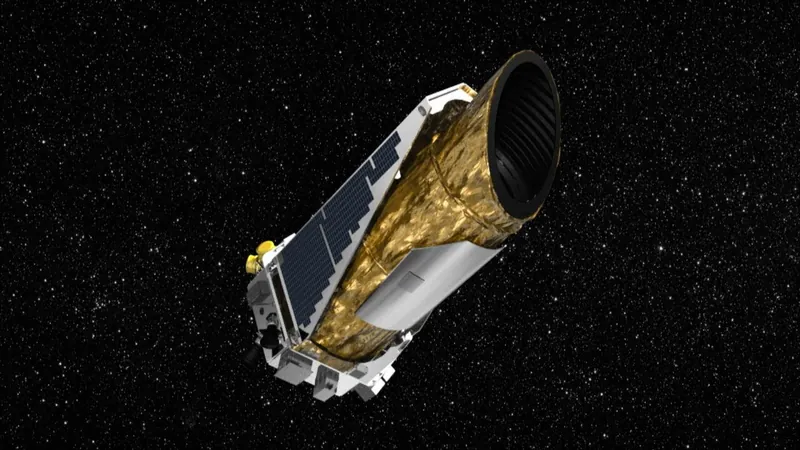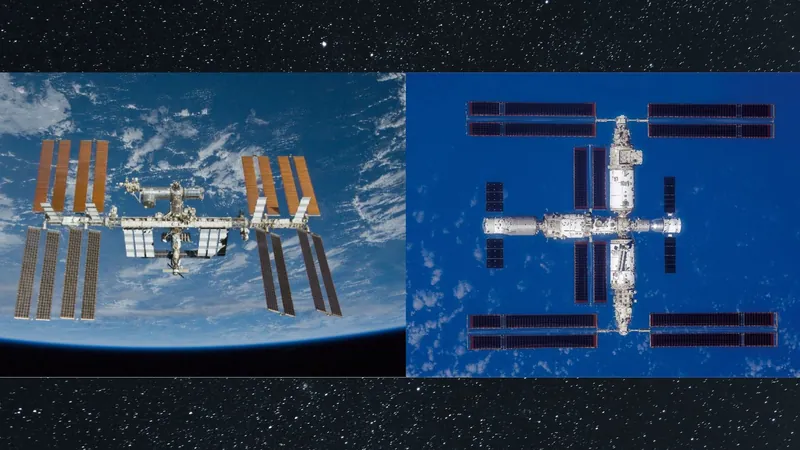
Astounding Discovery: Seven New Exoplanet Candidates Uncovered in Kepler's Data!
2025-01-24
Author: Rajesh
Introduction
The Kepler mission, recognized as one of the most prolific endeavors in the search for exoplanets, has added another remarkable chapter to its legacy. Over nearly a decade of operation, Kepler confirmed the existence of approximately 2,600 exoplanets — a staggering achievement that represented nearly half of all confirmed exoplanets at that time. Yet, it seems that the cosmos had more secrets to reveal. Recent research suggests that seven additional exoplanet candidates were hiding in the background data collected during the mission.
Focus of Kepler's Data
Significantly, the focus of most analyses during Kepler’s tenure was primarily on a select group of around 150,000 stars that it was directly tasked to observe. However, the telescope inadvertently captured light from countless other stars in its field of view. Researchers John Bienias and Robert Szabó from Hungary's Konkoly Observatory have invested considerable time poring over this incidental data, leading to their groundbreaking publication which hints at the existence of these seven new candidates.
Public Access and Exploration of Data
Kepler’s raw dataset has always been publicly accessible, with NASA providing a platform for researchers worldwide to delve into the invaluable information collected during its mission. Despite more than 3,136 peer-reviewed studies utilizing Kepler’s data, it’s intriguing to note how much underexplored territory remains within this rich trove of information.
Method of Detection
The relentless pursuit of knowledge has led Bienias and Szabó to stumble upon a diverse selection of stars whose light curves suggested something extraordinary: the presence of exoplanets transiting in front of them. This method of detection, known as the "transit method," represents a time-honored technique in the identification of exoplanets and has been systematically applied in the field for decades.
Challenges in Analyzing Data
Despite the inherent challenges of examining stars that Kepler was not directly focused on — leading to patchy data and lower resolution — modern software developments have made analyzing such data increasingly feasible. Tools like the Lomb-Scargle algorithm, which is known for detecting periodic signals in time-series data, played a crucial role in identifying these new exoplanet candidates.
Advanced Software Utilization
Further analysis utilized advanced software such as PSFmachine to resolve overlapping light curves, which occur when multiple stars are too close for clear individual measurements. While the authors faced various hurdles with these tools, including instances where they could not isolate star curves independently, their perseverance paid off.
Cross-Referencing Findings
Additionally, the Pytransit package, which estimates transit models of light curves, was instrumental in scrutinizing the optical data. The researchers cross-referenced their findings with Gaia’s rich dataset — a groundbreaking mission in its own right dedicated to mapping the stars — ensuring that their candidates were indeed genuine.
Discovery Overview
The results were extraordinary: all seven exoplanets identified turned out to be "hot Jupiters," gas giants with sizes between 0.89 and 1.52 times that of Jupiter, orbiting their stars at shockingly close ranges of just 0.04 to 0.07 astronomical units (AU). Interestingly, the researchers checked for potential second planets around these stars but found no additional companions.
Conclusion
While seven potential exoplanets may seem modest compared to the vast array unveiled previously by Kepler, this discovery underscores the ongoing significance of the mission. It illustrates how vast reservoirs of data can still yield valuable insights, especially as new analytical methods and software continue to evolve. The ongoing quest for understanding the cosmos suggests that further surprises may yet be lurking in the shadows of Kepler’s legendary dataset. As astronomers continue to refine their tools, the promise of uncovering even more hidden worlds remains tantalizingly within reach.



 Brasil (PT)
Brasil (PT)
 Canada (EN)
Canada (EN)
 Chile (ES)
Chile (ES)
 Česko (CS)
Česko (CS)
 대한민국 (KO)
대한민국 (KO)
 España (ES)
España (ES)
 France (FR)
France (FR)
 Hong Kong (EN)
Hong Kong (EN)
 Italia (IT)
Italia (IT)
 日本 (JA)
日本 (JA)
 Magyarország (HU)
Magyarország (HU)
 Norge (NO)
Norge (NO)
 Polska (PL)
Polska (PL)
 Schweiz (DE)
Schweiz (DE)
 Singapore (EN)
Singapore (EN)
 Sverige (SV)
Sverige (SV)
 Suomi (FI)
Suomi (FI)
 Türkiye (TR)
Türkiye (TR)
 الإمارات العربية المتحدة (AR)
الإمارات العربية المتحدة (AR)